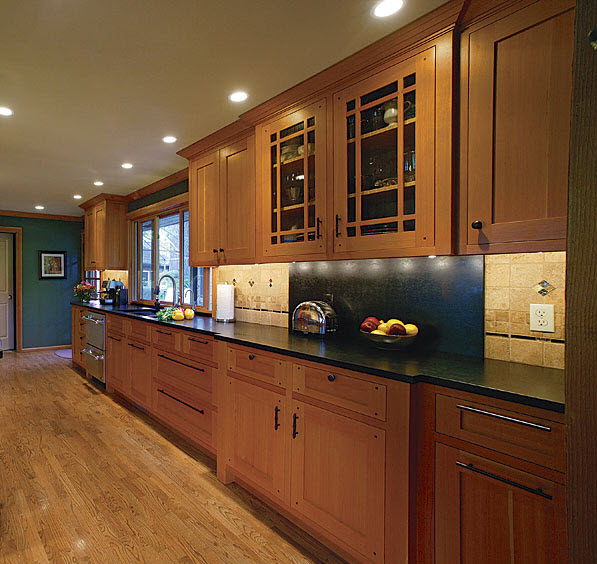
Buying cabinets from a small shop has a few big advantages, and some potential pitfalls.
On the plus side, you should get exactly what you want: well-made cabinets that fit the space precisely and in the style and finish you request. And you’re giving your business to a local person, not a distant factory.
The risk is the cabinets could be poorly made, badly installed, or delivered behind schedule. Here’s how to make sure that doesn’t happen:
See examples of his or her work, and visit the shop if you can
Good cabinetmakers are proud of their work, and they should be happy to show you a portfolio of kitchens they’ve built or even arrange for you to see one or two in person. Ask for references and call the most recent clients.
Pay careful attention to the fit and finish of installed cabinets, particularly if you get the chance to visit a job in person. Make sure surfaces have been carefully sanded and that the finish has been applied evenly, and don’t be afraid to open doors and drawers and look at interior surfaces.
Doors should hang evenly. Joints in face frames and doors should be tight and gap-free. Drawers should open and close smoothly. The faces of adjoining cabinets should meet evenly, and there should be no awkward gaps between cabinets and the walls they abut.
Be specific about how cabinets will be built
“There are a lot of good ways to build cabinets,” says Joseph B. Lanza, a designer and builder in Massachusetts who has both built kitchens and installed manufactured cabinets.
Still, it’s a good idea to do a little homework in advance so you know the difference between plywood and particleboard, say, or a dovetailed drawer box and one that’s been stapled together.
Hardware–drawer slides and pulls and door hinges–are important features, too. If you can afford it, specify full-extension, ball-bearing drawer slides with a soft-close feature and fully adjustable European cup hinges.
When you sit down with the cabinetmaker, be specific about what materials you want and put it in writing. If you want something complicated and difficult to build, or made with exotic materials, be prepared to pay for it.
Is this shop equipped to handle the work?
If you’re looking for a particular cabinet style, especially one that’s a challenge to execute, find out whether the cabinetmaker has done that kind of work in the past and that the shop has any specialized machinery that will be required (or has a reputable specialty sub to do the work). You don’t necessarily want to be the client the cabinetmaker learns with.
An increasing number of small shops buy their drawers and doors elsewhere, as Lanza does. Components should be well made and well finished–and often less expensive than if made locally.
One area where a factory may have an edge over a small shop is with the finish. “In a lot of ways you’re at a disadvantage with a small shop,” Lanza says. “Somebody can build a great cabinet and not have the ability to put an up-to-the-minute, bulletproof finish on it.”
If the cabinetmaker’s finishing prowess is limited to wipe-on poly or tung oil, make sure you’re OK with that.
Installing your new cabinets is the last hurdle. If you plan on doing it yourself, read up on the process–it’s not as easy as it looks. If not, Lanza suggests making sure the installer is fully insured.
Fine Homebuilding Recommended Products
Fine Homebuilding receives a commission for items purchased through links on this site, including Amazon Associates and other affiliate advertising programs.

Reliable Crimp Connectors

8067 All-Weather Flashing Tape

Affordable IR Camera



























